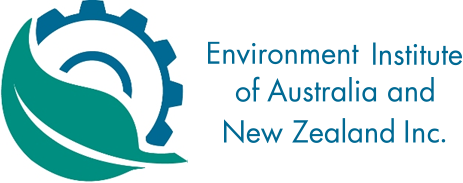-
Member Login
- Home
- About
- Institute Groups
- Membership
- Events
- News & Publications
- Institute Programs
- Resources
- Jobs Board
- Contact Us
- Site Info
More on Marmion Marine Park
The Marmion Marine Park was announced by the Western Australian Government in May 1987 and was gazetted in September 1987. Thirty years ago, it was the first of the marine parks and reserves created in WA by the State Government. Since then, the multi-use Marmion Marine Park has clearly been a success – in part evidenced by the two million visitors every year estimated by the Department of Parks and Wildlife.
It is worth noting that, at the time, the proposal for a marine park offshore from the ‘Whitford Nodes’, and the related proposal to site a new recreational boat harbour within the park, was highly controversial. A 1985 request published in local papers, from the then Department of Conservation and Environment (DCE) for public inputs into the proposals, generated thousands of written submissions against the boat harbour, scores of submissions against the marine park, and just six submissions supporting one or other of the two proposals.
The general location of the then potential ‘M10 marine reserve’ was identified by the DCE’s ‘System Six study team’ during 1976 to 1983, and appeared as such in the ‘System Six’ reports in the early 1980s. In 1985, our Chief Executive Officer Barry Carbon (EIANZ Honorary Fellow) astutely recognised an opportunity to obtain special extra Government funding to allow the DCE’s Marine Branch to undertake about two years of intensive environmental impacts and social impacts studies on the proposed marine park, on the proposed boat harbour, and the on implications of having the boat harbour within the marine park. That culminated in successive briefings to the WA EPA, during 1985 to 1987, for the EPA to recommend to the Environment Minister in Cabinet the creation of the park, and to recommend the boat harbour could also proceed.
As part of the extensive public consultation process, departmental staff (then Department of Environment - DoE) in late-1986 took large poster displays of the proposals and possible options for implementation to shopping centres in the northern coastal suburbs, with staff attending the displays and answering questions during the days and during late-closing evenings. Staff also took pamphlets to people found using the beaches, to people using the northern coastal boat ramps, and to some homes fronting the coast, to engage with local people. The feedback was that the local people who had any views on the proposals overwhelmingly either supported the proposals or supported them but had some concerns about issues. The three main issues were whether the boat harbour activities would result in unacceptable increased pollution (mainly noise and hydrocarbons), whether recreational fishing activities would be curtailed, and whether residential land values in the area would be adversely affected. Some other issues raised in the submissions were concerns that the boat harbour would result in increased coastal erosion to the north, that increased use of the immediately offshore area would degrade its perceived existing ‘pristine’ environments, and that inevitable pollution would result in a starfish plague.
DoE’s marine and social impact studies during 1985 and 1986 determined that the offshore areas had long since moved past being ‘pristine’ due to fishing and other pressures including decades of anchor damage to seagrass meadows and the siting of a treated wastewater outfall. The study teams concluded that, properly managed, the boat harbour sited within the marine park could actually become an asset. Hence, controversially, the DoE’s study teams successively briefed the WA EPA that it should recommend to the Environment Minister in Cabinet that both the marine park and the boat harbour could proceed, subject to a suite of mandatory Ministerial conditions.
By early 1987, the park boundaries had been determined, Cabinet had agreed on the names (Marmion Marine Park and Hillarys Boat Harbour), and DoE had produced a comprehensive draft management plan for the park, as a 10,500 hectare multi-use area including no-take areas and other areas where various forms of fishing were allowed. Barry Carbon then obtained further special Government funding so that the marine park, announced by the Government in May 1987 would have the appropriate resources to be properly managed. Marmion Marine Park was formally gazetted in September 1987.
In mid-1987, the Marmion Marine Park was transferred to the then Department of Conservation and Land Management, as a going concern complete with the resources required for its ongoing management. The Department of Marine and Harbours became the manager for Hillarys Boat Harbour.
If there was to be a single person named as the ‘driving force behind the establishment of the Marmion Marine Park’, it would have to be Barry Carbon, who, through his political astuteness in 1985, kick-started the establishment of the marine park in 1987, and then in 1987 assured its implementation by gaining additional resources for its ongoing management.
However, Barry Carbon would be quick to point out that the ‘driving forces in the establishment of the Marmion Marine Park’ also included about 25 various environment department staff who progressed the proposed marine park from its conception in 1976 to its delivery in 1987, thousands of members of the public who submitted their written opinions for consideration, many thousands more members of the WA public who engaged in dialogue with the DoE’s field consultations staff, the WA EPA which considered voluminous reports and opinions and then recommended to the Minister for the Environment that the marine park should proceed with conditions applied, and the numerous external university and commercial consultants who also contributed their expertises during those eleven years.
 |
Dr John Ottaway FEIANZ Chief Environmental Officer 1984 – 1988 Marine Impacts Branch Former Department of Conservation and Environment |
We acknowledge and value the rights and interests of Indigenous Peoples in the protection and management of environmental values through their involvement in decisions and processes, and the application of traditional Indigenous knowledge.

